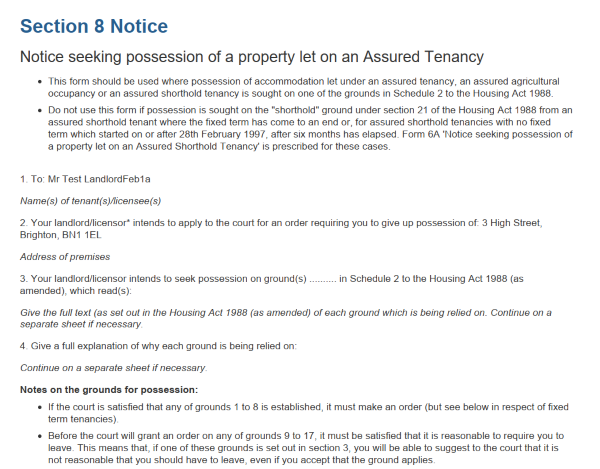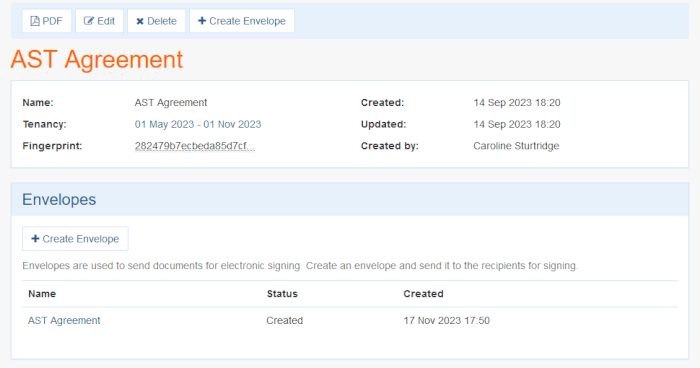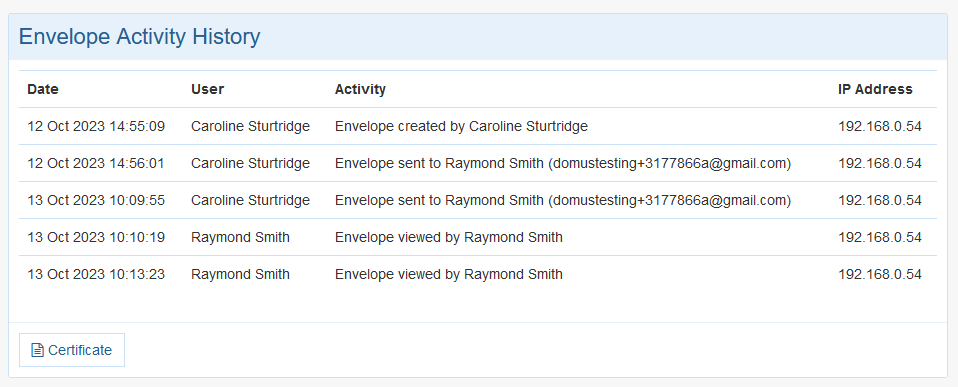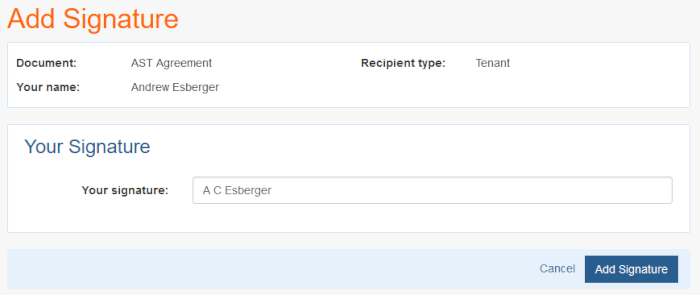About the Section 8 Notice
A Section 8 Notice should be used where possession of accommodation let under an assured tenancy or an assured shorthold tenancy is sought on one of the grounds in Schedule 2 to the Housing Act 1988.
There are 17 different grounds, or reasons, covering things like rent arrears, breaches of the tenancy agreement, neglect and repossession by the mortgagee.
Before You Serve a Section 8 Notice
Before you serve a section 8 notice, you will need to have determined the grounds upon which you seek possession. It is advisable to use all grounds that apply because some grounds can be hard to substantiate.
You must include specific information in your Section 8 Notice. This is called 'prescribed information' and includes information about the property, landlord, tenant and tenancy as well as the grounds for possession.
You can give the tenants between 2 weeks and 2 months notice depending on the grounds you use.
Grounds for Possession
Mandatory Grounds
If any one of the following grounds is proved by the landlord, the court must grant possession to the landlord.
- Ground 1: Landlord retaking property as their main home
- Used when the landlord wants to regain the property as their principal home. It is only permitted when the landlord has already lived in the property as their main home and they, or their spouse or civil partner, require it to live in as their main home.
- Ground 2: Mortgage
- Used when the property is subject to a mortgage which existed before the start of the tenancy and the lender wants to repossess the property.
- Ground 3: Holiday let
- Used when the property was previously used as a holiday let and is required to return to the status of holiday let. The landlord must give written notice no later than the beginning of the tenancy.
- Ground 4: Property tied to an educational institution
- Used when the tenancy is granted by an educational institution and is a fixed term tenancy for a term not exceeding twelve months. The landlord must give written notice no later than the beginning of the tenancy.
- Ground 5: Housing for a minister of religion
- Used when the property is being used by a minister of religion and is required for another minister. The landlord must give written notice no later than the beginning of the tenancy.
- Ground 6: Refurbishment
- Used when the landlord intends to demolish, reconstruct or carry out substantial works on the property which cannot reasonably go ahead with the tenant there. The landlord is required to pay all reasonable moving costs to the tenant.
- Ground 7: Death of the tenant
- Used when the current tenant is an heir to the original tenant and is not named on the original tenancy agreement. The landlord must serve notice within 12 months of the death of the original tenant.
- Ground 8: Rent arrears
- Used when the tenant has failed to pay more than 8 weeks rent in the case of weekly payments, 2 months in the case of monthly payments or 1 quarter in the case of quarterly payments. It is common practice to use this ground in conjunction with Grounds 10 and 11 so that a partial payment by the tenant prior to the court hearing doesn’t render the possession order obsolete.
Discretionary Grounds
If any one of the following grounds is proved by the landlord, the court may grant possession if it feels it is reasonable.
- Ground 9: Alternative accommodation
- Used when suitable accommodation of equivalent type and quality has been offered to the tenant and refused. The landlord is required to pay all reasonable moving costs to the tenant.
- Ground 10: Rent arrears
- Used when the rent is in arrears but by no more than 8 weeks in the case of weekly payments, 2 months in the case of monthly payments and 1 quarter in the case of quarterly payments.
- Ground 11: Regular failure to pay rent
- Used when the tenant has failed to pay rent on a regular basis. Rent does not have to be in arrears on the date that the notice is served.
- Ground 12: Breach of tenancy agreement
- Used when the tenant has breached any term of the tenancy agreement.
- Ground 13: Neglect
- Used when the property has been neglected by the tenant or sub-tenant and as a result the condition of the property has deteriorated.
- Ground 14: Anti-social behaviour
- Used when the tenant is considered a nuisance or annoyance to neighbours or other tenants.
- Ground 15: Poor treatment of furniture
- Used when the furniture in the property has been ill-treated by the tenant or by someone residing in the property who the tenant has not removed.
- Ground 16: Employment ceases
- Used when the property was let to the tenant in relation to their employment but that employment has now come to an end.
- Ground 17: False statements
- Used when property was let on the basis of false information provided by the tenant or one of their referees or guarantors.
For more information, you can find Schedule 2 to the Housing Act 1988 here:
https://www.legislation.gov.uk/ukpga/1988/50/schedule/2
If you're not sure which grounds apply, please seek legal advice.
After You Give Notice
You will need to ensure that you keep proof that you gave notice to your tenants.
You can apply to the court for a possession order if your tenants do not leave by the specified date.
Get Started
Create Section 8 Notice Now
Already have an account? Sign In




